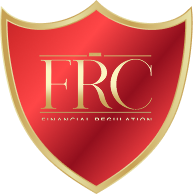Derivatives trading plays a crucial role in global financial markets, allowing investors to hedge risks, speculate on price movements, and enhance portfolio diversification. However, these benefits come with an inherent risk—counterparty risk.
Counterparty risk is the risk that one party in a derivatives contract will default on its financial obligations, leading to potential losses for the other party. This type of risk became a major concern during the 2008 financial crisis, when institutions like Lehman Brothers collapsed, leaving billions in unfulfilled derivative contracts.
This article explores the causes of counterparty risk, its impact on financial markets, and strategies for managing exposure in derivatives trading.
Understanding Counterparty Risk in Derivatives
Counterparty risk, also known as credit risk, arises when one party in a financial contract fails to meet its contractual obligations.
In derivatives trading, this means that one party may fail to make a required payment, deliver assets, or meet margin calls, causing financial instability for the other party.
✔ Exists in all over-the-counter (OTC) and exchange-traded derivatives.
✔ Increases with longer contract durations.
✔ Magnified by market volatility and financial distress.
Causes of Counterparty Risk in Derivatives Trading
Unlike exchange-traded derivatives, OTC derivatives are traded privately between counterparties, without a central clearinghouse to guarantee transactions.
🔹 Example:
The 2008 crisis revealed massive OTC counterparty risks when AIG’s credit default swap (CDS) contracts became worthless.
Derivatives allow traders to control large positions with minimal capital, increasing exposure to default risk.
🔹 Example:
Archegos Capital (2021) used leverage in swap agreements without adequate collateral, leading to $20 billion in losses for banks.
Sharp market movements can cause margin calls, forcing counterparties to sell assets at losses or default on contracts.
🔹 Example:
UK Pension Fund Crisis (2022): Rising bond yields triggered derivative margin calls, forcing pension funds to sell assets at distressed prices.
Large financial institutions engage in complex derivatives contracts with multiple counterparties. When one fails, it can trigger a chain reaction of defaults.
🔹 Example:
Lehman Brothers (2008) had over 900,000 derivatives contracts when it collapsed, disrupting global markets.
Weak risk controls, lack of transparency, and poor oversight increase counterparty risk.
🔹 Example:
MF Global (2011) misused customer funds for risky derivatives trades, leading to $1.6 billion in missing assets.
How Counterparty Risk Impacts Financial Markets
When a major counterparty defaults, the impact spreads across markets, leading to liquidity crises and economic downturns.
🔹 Example:
The 2008 credit crisis resulted from a chain of counterparty defaults in mortgage-backed securities (MBS) and credit default swaps (CDS).
Counterparty risk events lead to extreme price swings, margin calls, and loss of investor confidence.
🔹 Example:
During the COVID-19 market crash (2020), derivative traders faced record-high margin calls, increasing volatility.
Firms must spend more on collateral, hedging, and risk controls to mitigate counterparty risk.
🔹 Example:
Basel III regulations increased capital requirements for banks engaging in derivatives trading.
Major counterparty failures reduce market confidence, discouraging investment and economic growth.
🔹 Example:
After the 2008 crisis, OTC derivatives faced tighter regulations under the Dodd-Frank Act, forcing greater transparency.
Risk Mitigation Strategies in Derivatives Trading
✔ Exchange-traded derivatives are cleared through CCPs, reducing counterparty risk.
✔ CCPs require margin deposits and act as a buyer to every seller and a seller to every buyer.
🔹 Example:
The Chicago Mercantile Exchange (CME) clears futures contracts, eliminating bilateral default risk.
✔ Initial margin – Funds required to enter a contract.
✔ Variation margin – Adjustments based on market movements.
🔹 Example:
The ISDA (International Swaps and Derivatives Association) sets global standards for margin agreements.
✔ Netting offsets multiple transactions, reducing overall risk exposure.
✔ Helps counterparties settle only the net balance owed, minimizing default risk.
🔹 Example:
Interest rate swap agreements use netting to settle only the net payments.
✔ Investors can buy CDS contracts to protect against counterparty default.
🔹 Example:
Hedge funds used CDS to protect against Lehman Brothers' collapse (2008).
✔ Spreading derivative exposure across multiple counterparties reduces concentration risk.
✔ Regulators impose limits on bank derivatives exposure to avoid excessive risk.
🔹 Example:
Basel III framework requires banks to diversify counterparties to prevent single-point failures.
✔ Banks and hedge funds conduct stress tests to assess counterparty risk under extreme conditions.
🔹 Example:
The Federal Reserve’s annual stress test ensures banks can withstand financial shocks.
Case Studies: Counterparty Risk in Action
✔ Cause: Excessive exposure to mortgage-backed derivatives.
✔ Impact: Over $600 billion in liabilities, freezing global credit markets.
✔ Lessons: Need for better collateral management and clearing mechanisms.
✔ Cause: Excessive use of total return swaps with multiple banks.
✔ Impact: Banks lost $20 billion when Archegos defaulted on margin calls.
✔ Lessons: Importance of counterparty risk limits and leverage controls.
✔ Cause: AIG insured mortgage derivatives without sufficient capital reserves.
✔ Impact: Required a $182 billion government bailout.
✔ Lessons: Importance of capital buffers and transparency in OTC derivatives.
Bringing It All Together
Counterparty risk is a major concern in derivatives trading, especially in OTC markets where financial institutions operate without centralized risk control. Understanding the causes, market impact, and mitigation strategies is crucial for investors, regulators, and risk managers.
✔ Counterparty risk arises when one party in a derivatives contract defaults.
✔ Lehman Brothers, AIG, and Archegos Capital are prime examples of counterparty risk failures.
✔ Clearinghouses, collateral management, and regulatory frameworks help reduce risk.
✔ Diversification, stress testing, and netting agreements improve risk resilience.
By adopting robust risk management strategies, financial institutions and investors can navigate derivatives markets more securely and efficiently.
Those preparing for regulatory exams find the Investment Advisor Certification a valuable addition.
Be the first to know about new class launches and announcements.


Financial writer and analyst Ron Finely shows you how to navigate financial markets, manage investments, and build wealth through strategic decision-making.
